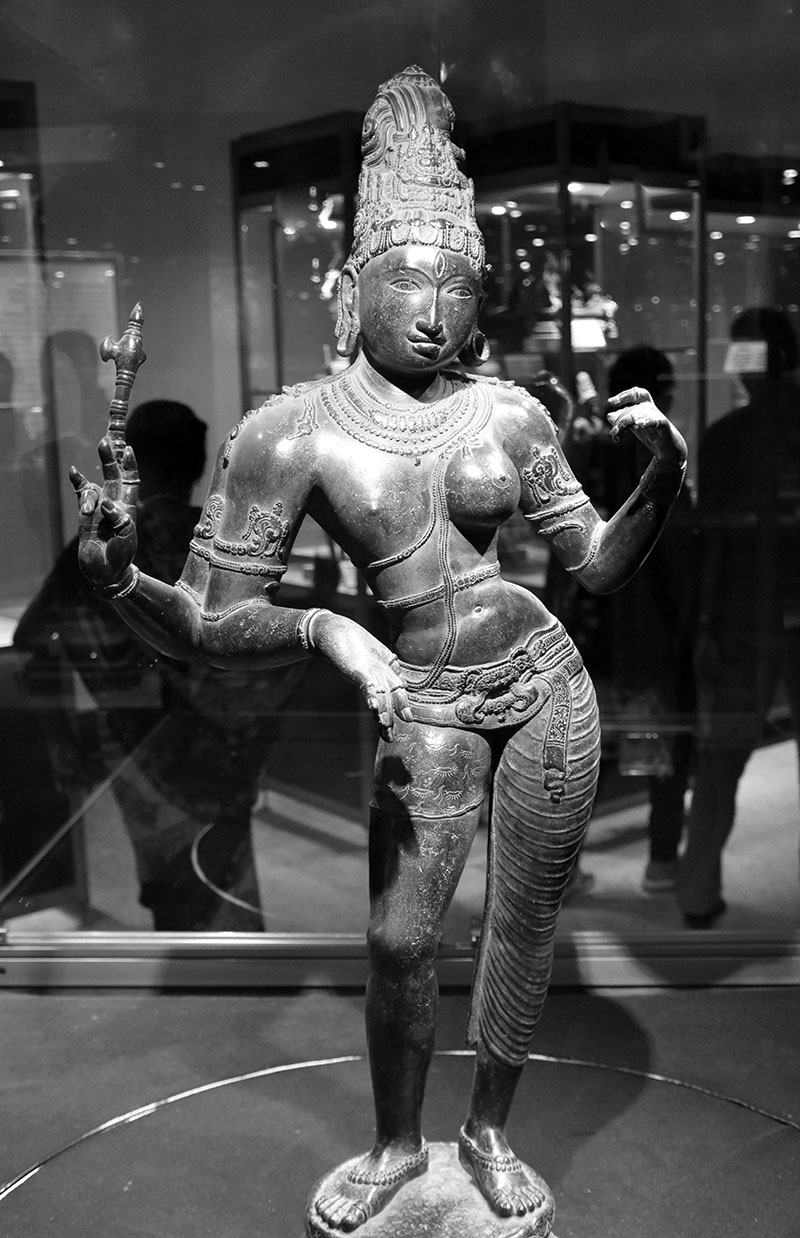An eleventh-century sculpture from the early medieval period, the Ardhanarishwara bronze statue is a composite form of the Hindu deity Shiva and his consort, Parvati. The name itself is derived from the Sanskrit terms ishwara, referring to Shiva, and ardha-nari, meaning “half-woman.”
Now in the collection of the Government Museum, Chennai, its origins can be traced to the Thiruvenkadu region of Tamil Nadu. The statue – which is 102 cm in height – is likely to have been used as an object of worship in rituals. It may have been made using the lost-wax method, which was common in the making of bronze sculptures in the region. While bronze sculptures had been produced across southern India for centuries earlier, the eleventh century saw an expansion in their use for rituals and processions in temples. This was catalysed by the growing complexity of the region’s political economy, a trend linked to the expansion of the Chola dynasty.
The Ardhanarishwara bronze statue is split along the vertical axis and follows the iconographic convention of depicting Shiva on the right and Parvati on the left. It comprises a figure in the tribhanga pose, standing atop a pedestal resembling a lotus. Shiva is depicted with a jatamukuta featuring a crescent, wearing a collection of ornaments and a lower garment falling to the thigh. On the left side, Parvati is depicted with a karandamukuta (small crown), an earring, a left breast, a curved hip and a lower garment falling to above the ankle. The two sides of the statue are depicted wearing similar jewellery, such as armbands and waistbands, as well as a single yajnopavita (sacred thread), which is shown draped across the torso, running from the left shoulder to the right.
Less conventionally, the depiction of the third eye on the forehead is shared between the two halves. In conventional iconography, this visual feature is usually shown as a half third eye on the right side and a dot or tilaka on the left side, or a full third eye with the tilaka placed below. Another distinctive feature of this statue is the number of arms. Shiva is shown with two arms, one right arm holding an axe and the other resting in front, with the palm facing inward, indicating the possibility that a bronze sculpture of Nandi the bull, Shiva’s mount, was shown along with the statue. Parvati is depicted with one arm, with the hand in the kataka mudra, to indicate the holding of a flower. This aspect of Shiva symbolises a divine unity, melding polarities of the masculine and feminine principles (purusha and prakriti).
The iconography of Ardhanarishwara as a form of Shiva is described in several canonical texts of Hinduism, such as the Vishnudharmottara Purana, the Matsya Purana and the Mayamata. Its earliest visual depictions date back to the first century CE, during the Kushana rule. Sculptural representations can also be found in the rock-cut caves of Elephanta and Badami, at the rock temple of Mamallapuram in Tamil Nadu and at the Simhanath Temple in Odisha.







